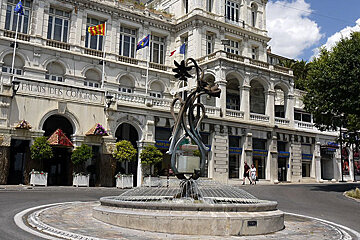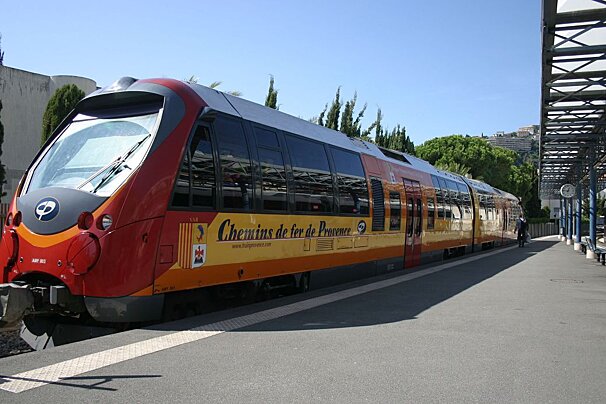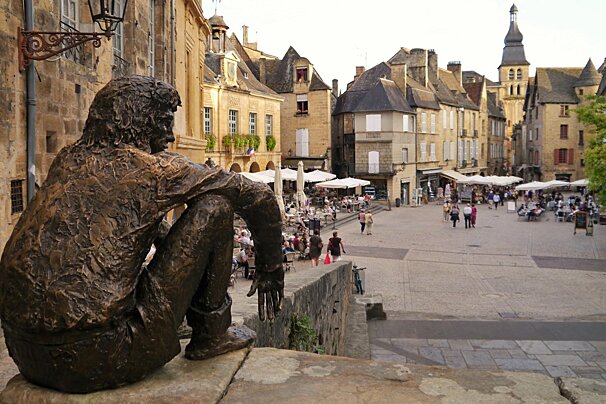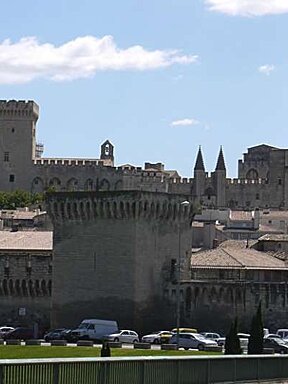
© SeeProvence.com

© SeeProvence.com

© SeeProvence.com

© SeeProvence.com

© SeeProvence.com

© SeeProvence.com
Grasse, Alpes-Maritimes
The world centre of perfume in the heart of the French Riviera
The town lies in the hills above Cannes and offers a fresher climate than the balmy coastal towns. A little bit scruffy in places, it does have some wonderful grand mansions in the centre and around the outskirts.
Blessed with a mild winter climate and a perfect setting on the southern slopes of Montagne de Doublier, Grasse has attracted visitors for centuries. In the early 19th century Pauline Borghese, Napoleon's favourite sister, spent a winter there. Queen Victoria was so taken by Grasse, its climate and surroundings, that she returned several times to winter at the Rothschild's villa. Today, the town has a substantial population of expatriates: the many villas and apartment complexes on the hill sides are witness to the fact.
Its prime location (only 15km from Cannes, 40km from Nice) is not the only attraction of Grasse. What makes the tourists arrive in droves is the scent of flowers, concentrated and powerful - Grasse is the perfume capital of the world. When you approach the town, you'll soon become aware of that fact. Billboards invite you to a free tour of one of the major perfume factories: Fragonard, Galimard or Molinard. These tours are worthwhile and educational about the intricacies of perfume making. They're not a tourist trap, even though at the end the guides will steer you to the factory store where you can buy fragrances, soaps and other local products.
Beyond its perfume connection, Grasse presents a charming old town with winding streets and surprisingly quiet squares and alleys. When in the main streets of the old town and its string of shops, you'll find yourself transported into the scented world. It's impossible to avoid the displays of dried flower petals (create your own mix), soaps, eau de toilette, and other items of fragrance. Indulge yourself in the richness of scent. If it begins to overwhelm you, find your escape to the Mediterranean sea, or the quiet of a Provençal village, just a few miles to the north or west of this perfume centre of the world.
It has an authentic old medieval centre which you can wander around with the help of a free walking map available from the tourist office. You'll find plenty of cafes and restaurants (Place aux Aires), gift shops, and of course, perfume shops.
History & Culture in Grasse
The history of perfume making in Grasse is fascinating.
From the Middle Ages the town was known for its tanneries, glove-making in particular. Then, in the 16th century, scented gloves became highly fashionable in a smelly world and Grasse was eager to follow the trend. Blessed with a surrounding countryside full of flowers, the town and its tanneries quickly became the foremost producer of these fragrant gloves. While the fashion of scented gloves faded away, the attraction to fragrance remained. The tanneries became the perfume houses which remain today.
One thing has changed, however. The flower-growing countryside around Grasse has disappeared for the most part, to make way for villas and apartments. Ingredients that are essential for the fragrances, rose petals, jasmine, or lily-of-the-valley, are now imported from countries such as Turkey.
Sights & Attractions in Grasse
One of the best natural sights to visit in the area is the Gorges du Loup. A beautiful area that is great for walking, hiking or just a Sunday drive along the road.
There are many perfume factories and producers but perhaps one of the best to visit is the Parfumerier Fragonard which is one of the oldest and hosts a great museum about the history of perfume.
If you're a history buff or art lover then you must not miss a trip to the Cathedral in Grasse, with a simple interior yet rich history this building also houses works of art by some of the great masters of painting including Rubens. Follow the signs to the Notre Dame du Puy cathedral, stemming from the 11th century, but completely renovated in the 17th.
Explore the history of Eastern Provence in this small museum. The Musee d'Art et d'Histoire de Provence give you a real flavour of life in Provence through the ages. Entry is free.
Events in Grasse
Every Wednesday there is an Antiques Market in the centre of Grasse on the terraces of the Cours Honoré Cresp.
Things to do in Grasse
Fragonard, Galimard, Molinard are three historic perfume-makers which open their doors to run tours. You can also make your own perfume at the Galinard or Molinard workshops, or visit the flower fields that are used to make the fragrances, including those that go into making the famous Chanel no5.
You could take a guided walking tour or ride Le Petit Train to learn the town's proud history and marvel at the gorgeous villas and medieval buildings.
Just out of town, why not test out your high-ropes skills and head to the Riviera Nature Adventure Park, ziplining through the trees and enjoying the spectacular views, or explore some of the limestone caves in the surrounding hills with a spelunking club. You can also join the long range hiking path GR4 as it runs from alpine villages down to the Mediterranean, or visit the truly stunning cliffs and waterfalls of Gorges du Loup.
Dining in Grasse
Grasse is abundant with good restaurants and pretty pavement cafes. Provencal food dominates, but there is quite a wide range of cuisines to be found in the old town of Grasse, even Asian if that takes your fancy. If Michelin star elegance, refined Provencal food and a stunning terrace is what you seek, head to Le Bastide St-Antoine, while La Licorne is known for providing excellent food for a reasonable price and La Malouine is the place to head for delicious crepes. There are also some award-winning restaurants to be found in the nearby little villages; such as Au Fil du Temps in Magagnosc.
Hotels in Grasse
With plenty of fine hotels you'll be spoilt for choice in this beautiful location. From five star luxury to small boutique hotels and lovely guest houses, there is something to suit everyone and every occasion.



























